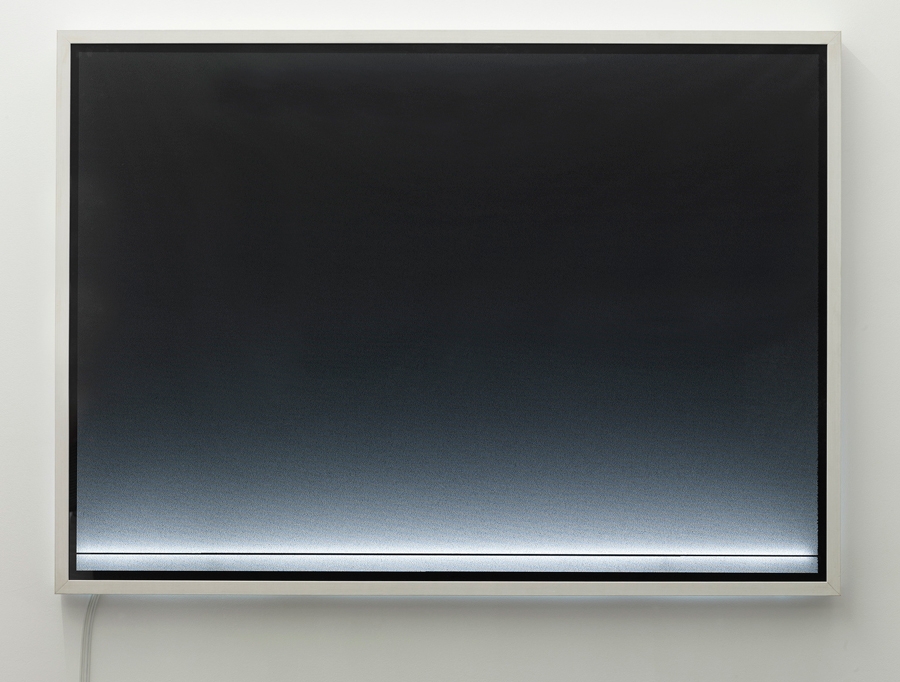

L'ÉLAN POUR L'AMÉRIQUE
2010, film négatif (Histoire de France de Michelet), néon 81,5 x 113,5 cm.
Crédit photographique : Fabrice Gousset
Le rêve américain préexiste à l'Amérique. C'est un espace utopique à investir. “L'Amérique” n'existe pas.
ll s'agit littéralement d'une photographie de l'histoire : celle, monumentale, de Jules Michelet, son histoire de France qu'il rédigea trente ans durant aux archives nationales.
Le texte transformé en film négatif par photogravure, est donc une photographie avant son tirage, son insolation lumineuse.
L'élan pour l'Amérique, chapitre la période 1760-1783, qui décrit la fondation des Etats-Unis, en particulier l'engouement pour le “nouveau continent”, la figure centrale de Benjamin Franklin, la guerre contre l'Angleterre et l'Acte d'indépendance. Période où tout l'imaginaire de cette fin de XVIIIe s'est alors tourné, comme par héliotropisme, vers le continent américain.
« ...nous avons la joie de la voir, la grande Amérique, monter, monter si haut, dans son immensité - orgueil, espoir, salut du monde.
Qu'importe qu'elle oublie, dans sa voie si rapide ?... Elle fait mieux que songer au passé. Elle ouvre l'avenir, et l'éclaire par ses grands exemples, par la solidité de son gouvernement, en face de la flottante Europe qui ne fait plus un pas que la terre ne lui tremble aux pieds. »
Le chapitre (écrit en blanc) n'apparaît pas sur le film (en fait il est écrit en blanc pour conserver l'exacte surface de texte, il n' y a donc physiquement rien d'écrit sur le film). ll laisse un espace vide, comme une biffure horizontale dans la masse du texte. Un néon éclaire cet espace manquant.
Photo : Fabrice Gousset
This piece is literally a photograph of history: the monumental History of France written over 30 years by Jules Michelet at the National Archives. This huge text, transformed into a negative film, is a photo-print before printing; it still hasn't received its flash of insulation.
“The American Fervor”, chapter describing the period between 1760 and 1783, the Foundation of the United States of America, the enthusiasm for the "new continent", the figure of Benjamin Franklin, the war against England and the Act of lndependence. This was the period when the collective imagination of the end of the 18th Century turned, as if by heliotropism, towards the American continent.
“...We have the joy of seeing her, this great America, rising, rising so high in her immensity - pride, hope, welfare of the world.
Who cares if she forgets, in her race so rapid? ... She does better than remember the past. She opens up the future and lights it by her great deeds, by the solidity of her government, facing the floating Europe whom all of her steps make the earth quaver.”
The chapter (written in white) doesn't appear on the film (it is in fact written in white to preserve the exact surface of the text, therefore there is nothing to be seen on the film). lt leaves an empty space, a neon-lit horizontal cross out across the body of the text.